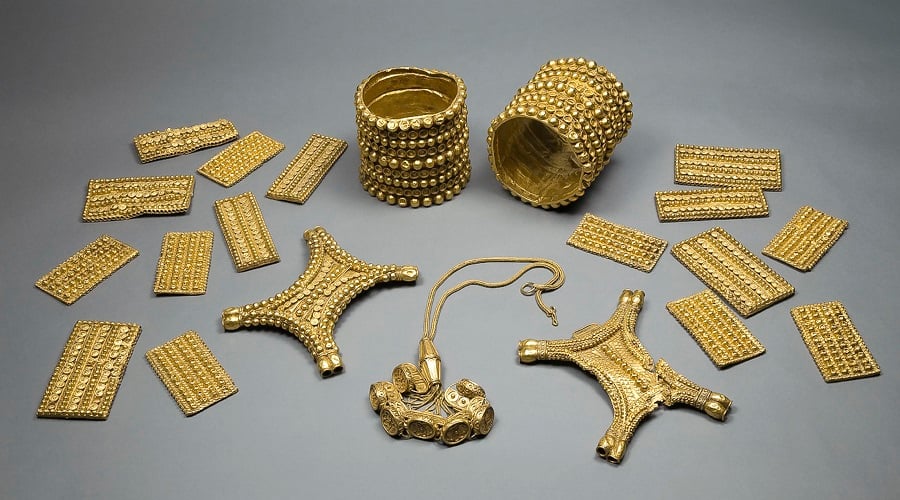
Add one more Atlantis theory to the dustbins of debunked history.
Dashing the hopes of believers across the world, archaeologists claim to have proven definitively that the fabled 2,700-year-old Carambolo Treasure, discovered in Spain in 1958, is not from the underwater kingdom of Atlantis. Instead, chemical testing indicates the golden hoard is local in origin and was probably extracted from mines near Seville, a city that actually exists.
“The results suggest that the origins of the gold may not be thousands of kilometers away, in the Atlantic or the Mediterranean, but rather in the same region,” reads a new study published in the Journal of Archaeological Science,
The origins of the extravagant treasure, which contains 21 pieces of ornate jewelry and ornaments, have been extensively researched over the past 60 years. The leading theories suggested the treasure was made by either the ancient Phoenicians or the wealthy Spanish city of Tartessos, which flourished from 9th to the 6th centuries BC, according to ancient texts. A trading civilization from present-day Syria, the Phoencians ruled between 1500 BC and 539 BC, and made their way west across the Mediterranean in the 8th century BC.
Carambolo Treasure. Seville Archaeology Museum. Photo by José Luiz Bernardes Ribeiro, via Creative Commons.
The far-fetched Atlantis theory is linked to Tartessos. Modern archaeologists have found only traces of this great, semi-mythical civilization. Because Tartessos mysteriously disappeared, some have suggested there is a connection to Atlantis—raising hopes that the treasure might prove the existence of the submerged city.
In the study, a team led by Ana Navarro, the director of the Archaeological Museum of Seville, examined tiny gold fragments from one piece of the treasure using chemical and isotopic analysis. The geochemical composition closely matched that of gold from local mines.
Gold-making in the region began some 2,000 years earlier, with the monumental underground tombs at Valencina de la Concepción, a site which appears to feature the same gold as the Carmbolo Treasure. The hoard marks, the paper argues, “not at the beginning, but rather at the end of a gold processing tradition that began in the Lower Guadalquivir Basin during the 3rd Millennium BC.”
Carambola Treasure. Seville Archaeology Museum © Ministerio de Cultura
The study doesn’t rule out, however, the Phoenician theory; the jewelry was in fact manufactured with Phoenician techniques. It’s possible that Phoenicians who had relocated to the western Mediterranean created the hoard in their traditional style.
For now, what archaeologists can debunk is a connection to Atlantis. “That’s complete madness,” Alicia Perea, a Spanish National Research Council archaeologist who has studied the Carambolo Treasure, told National Geographic. “That has nothing to do with archaeology or scientific research.”